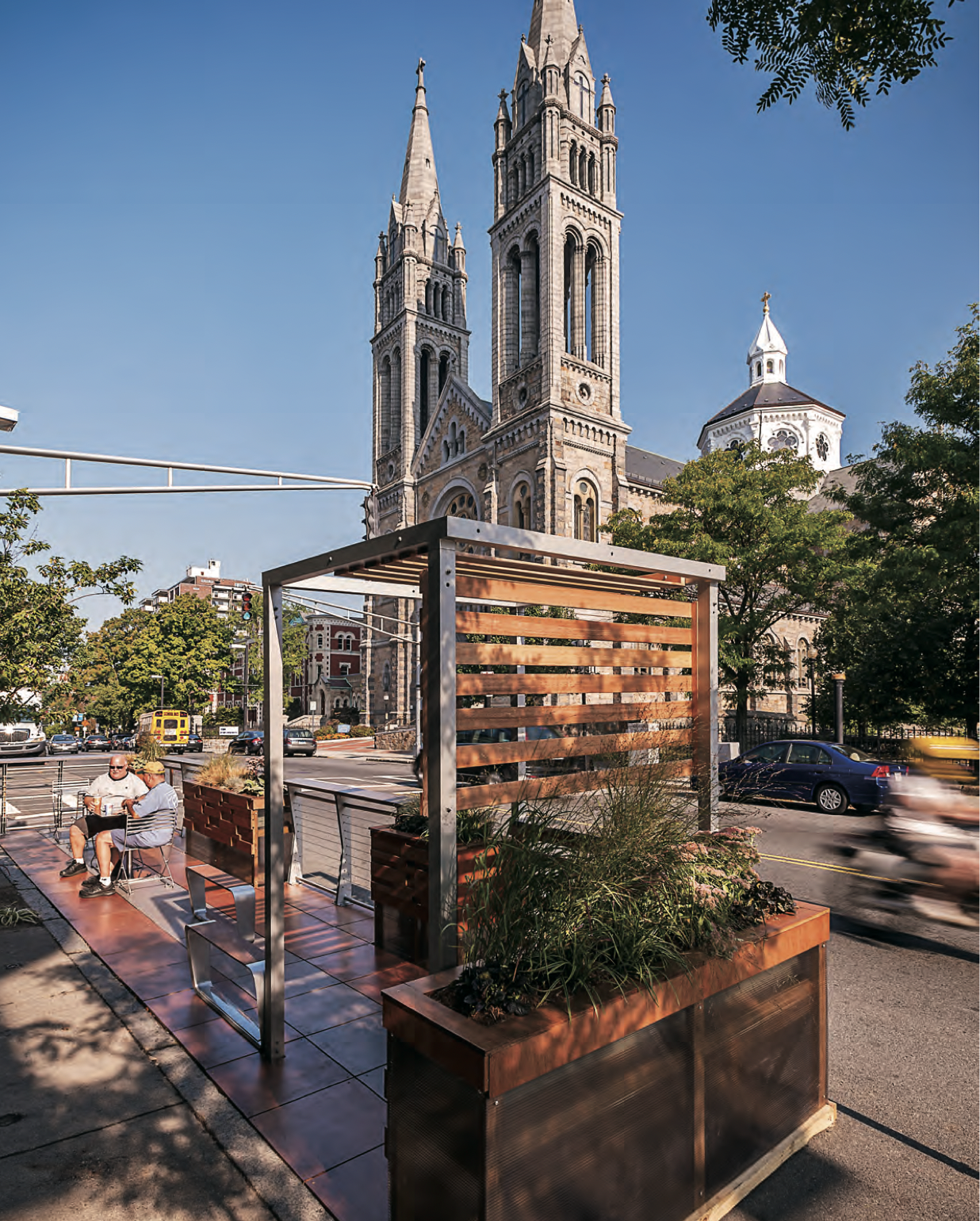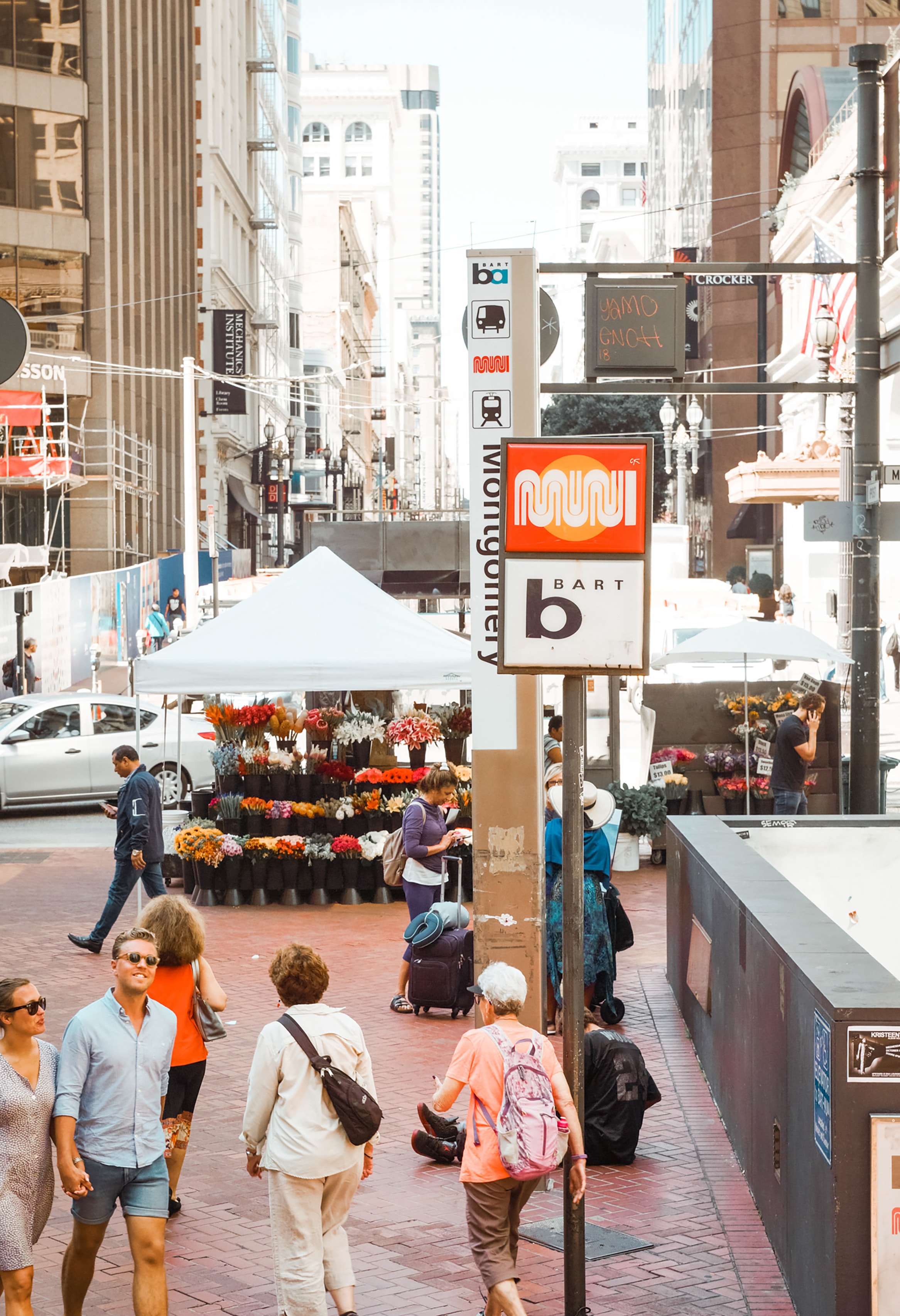[ RECOMMENDATION ]
6. Establish
a public realm activation grant and create public realm design guidelines.
WHYPublic realm activation
in commercial districts occurs in all types of spaces—streets, sidewalks,
plazas (interim, permanent), and more. However, financial and technical
resources have been created and distributed in silos by type of space or by
City program.
The public, however, does not typically differentiate its experiences and use of the public realm by type of space—especially when they are closely connected within a single commercial district. It is therefore important for the City to acknowledge this general user experience by making improvements and supporting activations across all of these different spaces through a consolidated “Public Realm Activation Grant” program.
The public, however, does not typically differentiate its experiences and use of the public realm by type of space—especially when they are closely connected within a single commercial district. It is therefore important for the City to acknowledge this general user experience by making improvements and supporting activations across all of these different spaces through a consolidated “Public Realm Activation Grant” program.
GOALS
︎ A User Experience
︎ B Long-Term Coordination
︎ C Inclusive Design
︎ D Collaboration and Communication
︎ E Support commerce and entrepreneurship
CATEGORY / TYPE
︎ Process / Regulatory Framework
︎ Funding
︎ Technical Assistance
︎ A User Experience
︎ B Long-Term Coordination
︎ C Inclusive Design
︎ D Collaboration and Communication
︎ E Support commerce and entrepreneurship
CATEGORY / TYPE
︎ Process / Regulatory Framework
︎ Funding
︎ Technical Assistance
THE STORY Rockwell Group expanded its DineOut program for safe communal dining to Chinatown early in the pandemic. DineOut Mott Street encompassed a full-block closure between Mosco and Worth Streets to create a new public space for up to 120 guests to gather simultaneously and eat at local restaurants.
To construct each dining pavilion with planters and furniture, the group spent over $25,000 per restaurant. Without the support of private funders such as Moët, Resy, and American Express, Rockwell Group and Chinatown Partnership would have been unable to provide safe dining arrangements for 12 restaurants on a single block in Chinatown.
“ Most people don’t realize the magnitude of cost of setting this (outdoor dining) up. This ends up becoming a loss for the restaurant industry if they add up the cost to set up. The open restaurants program has created more opportunities for social interactions because before people were only dining indoors at restaurants. It’s also provided a psychological boost and placemaking benefits…It no longer feels like a ghost town.”
Wellington Chen, Executive Director of Chinatown Partnership Local Development Corporation
HOW TO IMPLEMENT
Designed and
administered by the “Public Realm Working Group” (see earlier recommendation),
the “Public Realm Activation Grant” should subsidize the cost of design,
procurement, construction of semi-permanent structures, public art, furniture,
lighting, and barricades used in the activation of the public realm. In
addition, grants should also be made available to cover any maintenance and
insurance costs. According to stakeholders, maintenance and insurance costs
have often served as major hurdles to continued activation of the public realm.
Applicants to the grant should also receive a stewardship and design guide that is multilingual, simple to understand, and keeps barriers to participation in, and management of, the public realm low.
Applicants to the grant should also receive a stewardship and design guide that is multilingual, simple to understand, and keeps barriers to participation in, and management of, the public realm low.
The design guidelines should be contextual or flexible enough to be adaptable to street, sidewalk, and plaza geometry or local conditions. The guidelines should also encourage high-quality design to increase the vibrancy of commercial corridors while balancing safety standards and ADA standards.
Case Study ︎︎︎ Case Study ︎︎︎ Case Study ︎︎︎
Open Streets Grant by NYC SBS
City of New York, NYThe one-time program funded through the American Rescue Plan Act provides up to $50,000 in direct funding to community-based organizations so they could primarily execute Open Streets in underserved areas’ business districts. Eligible activities funded through the program include street management, cleanliness and beautification, streetscape enhancements, district marketing, and programming.
Award amounts are determined by the frequency and expanse of the designated Open Street event. Although narrow in scope, this funding program would serve as a valuable case study if made permanent and expanded to apply to a wider range of public spaces beyond just Open Streets. As previously indicated, our commercial districts are home to a variety of public spaces that each deserve care, maintenance, and activation.
Tactical Public Realm Guidelines
City of Boston, MAThe guidelines, developed by Boston’s Public Realm Working Group, are intended as community resources for tactical placemaking that reflects updated city processes for the creation of interim and temporary plazas, parklets, outdoor cafes, and street murals along Boston’s streets. Similar to this publication, the toolkit outlines regulatory processes involved in each kind of public realm activation as well as general location/siting requirements and design considerations.
Most importantly, the guidelines signal Boston’s acknowledgement that the public realm serves a greater role beyond facilitating vehicular and human circulation—public spaces are “living rooms”, “canvassess” and “experiments” for Boston.


Public Space Stewardship Guide
City of San Francisco, CAUnlike the “Tactical Public Realm Guidelines” by the city of Boston, the “Public Space Stewardship Guide” is focused on educating community groups about sustainable models for public realm stewardship, including event-based models, grassroots partnerships, public/private partnerships, self-governing special assessment districts, and maintenance/technical assistance partnerships. It also includes ready-to-use templates, including a public space management plan and maintenance plan.
WHO DOES THIS HELP
Guidelines would ensure that public realm managers and activators are able to comply with City regulations while being creative. The guidelines would also build a common knowledge base that limits room for negotiation between enforcers and permit holders.
︎︎︎ Executive Summary
︎︎︎ Introduction
︎︎︎ The Brief/Challenge
︎︎︎ Understanding the Regulatory Landscape
︎︎︎ Sidewalks
︎︎︎ Streets
︎︎︎ Plazas
︎︎︎ Navigating the Current Regulatory Process
︎︎︎ Adapting to the Pandemic
︎︎︎ Introduction
︎︎︎ The Brief/Challenge
︎︎︎ Understanding the Regulatory Landscape
︎︎︎ Sidewalks
︎︎︎ Streets
︎︎︎ Plazas
︎︎︎ Navigating the Current Regulatory Process
︎︎︎ Adapting to the Pandemic
︎︎︎ Enhancing the City’s Approach to Public Space Management
︎︎︎ Recommendations
︎︎︎ Appendix
︎︎︎ Credits
︎︎︎Watkins Public Space
︎︎︎What’s Up, Jamaica!
︎︎︎ Recommendations
︎︎︎ Appendix
︎︎︎ Credits
︎︎︎Watkins Public Space
︎︎︎What’s Up, Jamaica!
